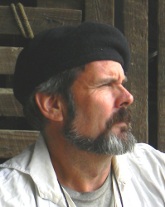You are hereOneida & Western Caboose restoration page 1
Oneida & Western Caboose restoration page 1
I am restoring an Oneida & Western caboose. This car has an interesting history; that railfans will enjoy. While talking to the owner, I learned the following: He operated a coal mine, but had some difficulties with the railroads getting the coal delivered on time. If the coal wasn't delivered by the scheduled date, there was a penalty. The owner decided that having his own RR equipment was necessary. In order to see his equipment at a distance, and know it was being properly routed by the big RR companies; he decide to paint all his equipment this bright tint of lime green. That's smart. All the RR equipment he got was brand new, and included road locomotives, coal cars, and two cabooses. The locomotives are the big SD class, the ones with 3 axles per truck.
Cabooses were declining in production, these two were the last ones made at that plant, and were added to an order placed by Union Pacific RR. That's why inside the caboose the number UP 25816 was stenciled.(Update: research has turned up some discrepancy as to whether this car was in fact numbered UP 25816 inside; I probably misunderstood what the owner was saying.)
I have an uncommon advantage on this job, that's a photo negative from a right angle. The caboose that I'm doing is number 9999; this article and other pages are concerning it. This is the third time restoration work has been done on it. I'll call the first one Restoration #1, which was probably done when the caboose was moved to its current location, a serene and beautiful place in East Tennessee. At that time, it was changed from green to gray with white lettering.
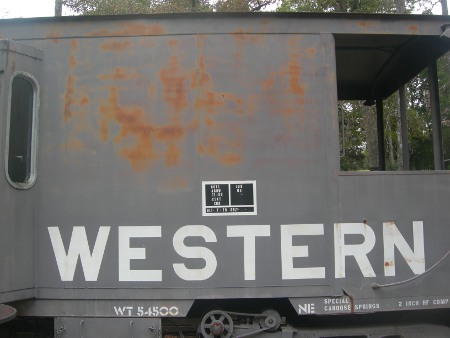
Restoration work #2 was performed sometime after 2008; but the restorer had some difficulties, finally leaving the work incomplete. My career history is that of sign painter; this requires a working knowledge of typography, which is one reason I place an emphasis on accuracy of lettering, even stenciled letters. Another reason for an emphasis on accuracy is that this caboose will probably be around many years; I want to leave a detailed account of my methods, and make a serious effort not to diminish what information is available. It's easy for inaccuracies to occur; below is a comparison of some stencil lettering from Restoration#1 and the original work. The top picture is from the original, compare the number WT 54500 with the same number from Restoration #1, which is the lower picture.
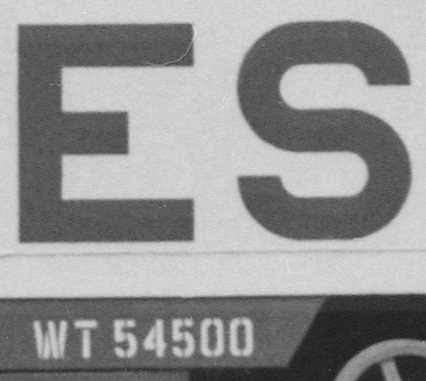 O_caboose1
O_caboose1

Now look at the letter O in Oneida from Restoration#2. The painter made it square-like, the same as the S and the D. In the original, the O was the only letter which was rounded on top and bottom.
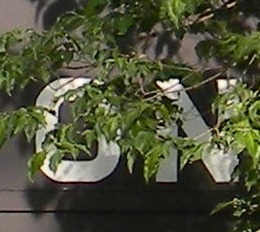
My preference is to make all the lettering as vector files; that way, people with no experience in hand lettering methods can use the files. These files are also very accurate, can be shared easily, and retain accuracy when enlarged or reduced in size. I haven't done much investigation regarding the method of painting letters originally used when the equipment was made and used. On a Norfolk and Southern boxcar I restored, it appeared that the lettering was applied with a magnetic stencil, which had wire bridges. In other words, instead of having a visible piece of stencil to bridge and hold in the middle of letters like O, A, and D; there was a piece of wire that arched up and over to the middle sections of those letters. The paint was probably sprayed on. Very close examination revealed thin lines where the paint was not applied as thick as the rest, these lines were consistently where bridges would be needed.
All that to say that by sending a vector file to a vinyl sign cutting machine, cutting paint mask, I can closely duplicate the way the paint was originally applied.
The large lettering on this caboose doesn't follow typical typography rules, it may be designed by an engineer with a background in mechanical design. So what I've done here is to take letters from a common font, convert them to curves, then node edit them to fit the letters in the pictures. In the picture below, you can see where I placed a letter over the pictu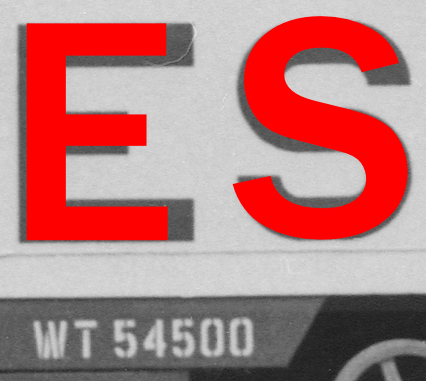 transform
transform
This will give you an idea of why I use certain methods, on the following pages I'll cover the how. Here's the links to the other pages:
Restoration of OWTX caboose links
